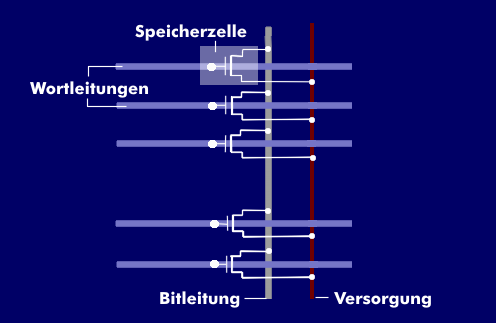NOR flash
Flash memory is available in NOR and NAND architecture. The difference is that NAND flashes can store two states in each memory cell, whereas NOR flashes can only store one state. As a result, NAND flashes have a higher storage density and higher access speed, as well as a footprint that is less than half that of NOR flashes.
Nor-Flashes store data sequentially and are well suited for memory cards, solid state drives( SSD) and USB flash drives, as well as for storing image files, music files and for data storage. They are also used for booting. NOR flashes, on the other hand, have direct random access and are used in code or program memories, for example, in set-top boxes, microcontrollers and cell phones. Due to the random access, the access speed is high.
NOR flash memories are permanent memories that are used as read only memories( ROM), as PROM or EPROM. They operate with NOR gates and are accessed via the bit and word lines. The readout of the stored data is random; the block constellation must be taken into account when storing. Because NOR memories can only store one bit, the storage density is lower than that of NAND flashes. Erasing takes place block by block. The block size is usually 64 KB.

